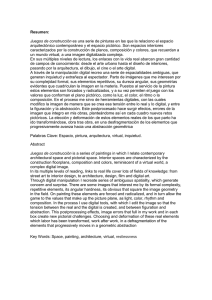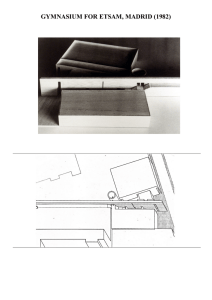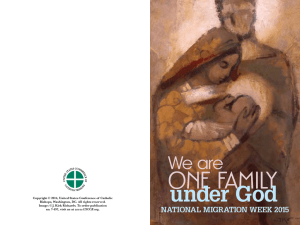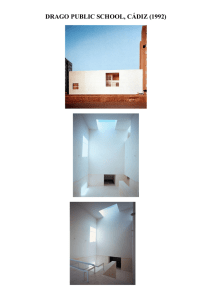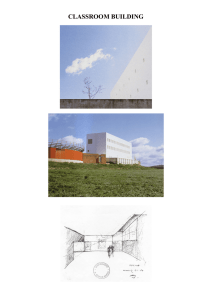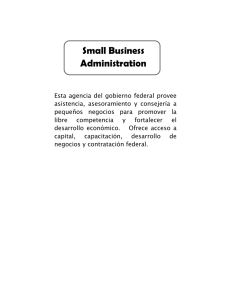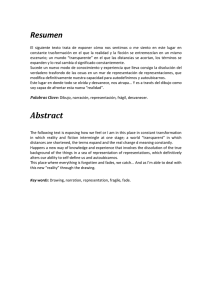Aprendiendo vocabulario mediante el juego.
Anuncio
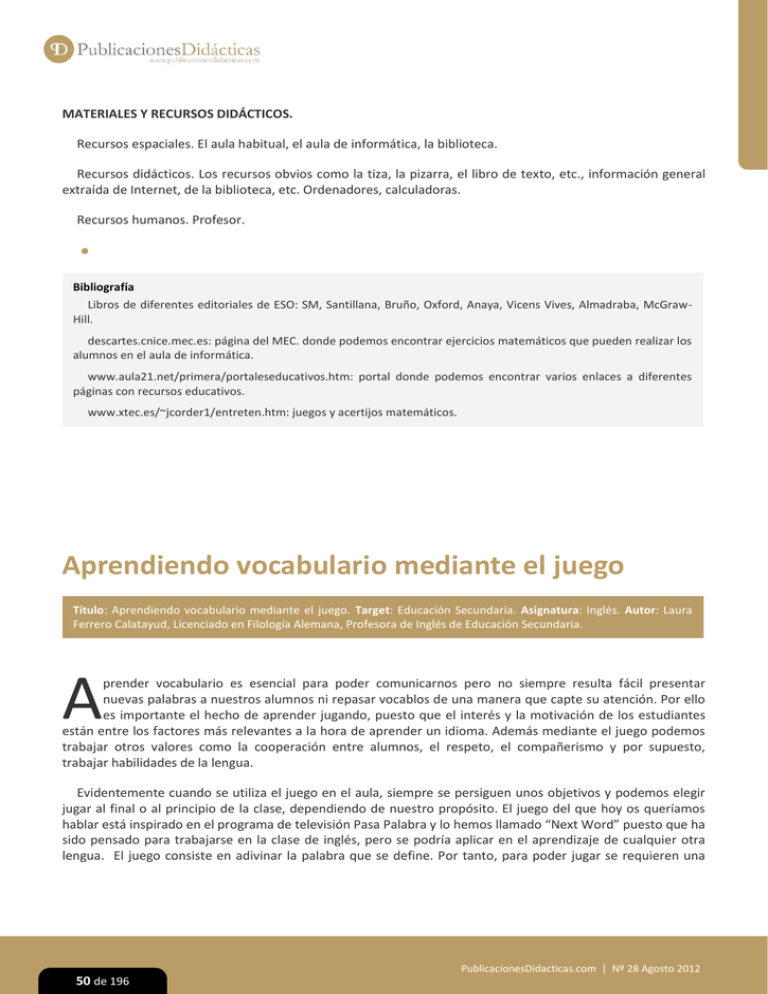
MATERIALES Y RECURSOS DIDÁCTICOS. Recursos espaciales. El aula habitual, el aula de informática, la biblioteca. Recursos didácticos. Los recursos obvios como la tiza, la pizarra, el libro de texto, etc., información general extraída de Internet, de la biblioteca, etc. Ordenadores, calculadoras. Recursos humanos. Profesor. ● Bibliografía Libros de diferentes editoriales de ESO: SM, Santillana, Bruño, Oxford, Anaya, Vicens Vives, Almadraba, McGrawHill. descartes.cnice.mec.es: página del MEC. donde podemos encontrar ejercicios matemáticos que pueden realizar los alumnos en el aula de informática. www.aula21.net/primera/portaleseducativos.htm: portal donde podemos encontrar varios enlaces a diferentes páginas con recursos educativos. www.xtec.es/~jcorder1/entreten.htm: juegos y acertijos matemáticos. Aprendiendo vocabulario mediante el juego Título: Aprendiendo vocabulario mediante el juego. Target: Educación Secundaria. Asignatura: Inglés. Autor: Laura Ferrero Calatayud, Licenciado en Filología Alemana, Profesora de Inglés de Educación Secundaria. A prender vocabulario es esencial para poder comunicarnos pero no siempre resulta fácil presentar nuevas palabras a nuestros alumnos ni repasar vocablos de una manera que capte su atención. Por ello es importante el hecho de aprender jugando, puesto que el interés y la motivación de los estudiantes están entre los factores más relevantes a la hora de aprender un idioma. Además mediante el juego podemos trabajar otros valores como la cooperación entre alumnos, el respeto, el compañerismo y por supuesto, trabajar habilidades de la lengua. Evidentemente cuando se utiliza el juego en el aula, siempre se persiguen unos objetivos y podemos elegir jugar al final o al principio de la clase, dependiendo de nuestro propósito. El juego del que hoy os queríamos hablar está inspirado en el programa de televisión Pasa Palabra y lo hemos llamado “Next Word” puesto que ha sido pensado para trabajarse en la clase de inglés, pero se podría aplicar en el aprendizaje de cualquier otra lengua. El juego consiste en adivinar la palabra que se define. Por tanto, para poder jugar se requieren una PublicacionesDidacticas.com | Nº 28 Agosto 2012 50 de 196 serie de fichas temáticas basadas en un campo semántico donde cada palabra empezará por una letra del abecedario. Un ejemplo de ficha temática es el siguiente: NEXT WORD ANIMALS alligator a large hard-skinned reptile that lives in and near rivers and lakes in the hot, wet parts of America and China. It has a long nose that is slightly wider and shorter than that of a crocodile. bat a small animal like a mouse with wings that flies at night calf a young cow, or the young of various other large mammals such as elephants and whales duck a bird that lives by water, has webbed feet (= feet with skin between the toes), a short neck and a large beak eagle a large strong bird with a curved beak which eats meat and can see very well fly a small insect with two wings fox a wild mammal belonging to the dog family which has a pointed face and ears, a wide furry tail and often reddish-brown fur grasshopper a plant-eating insect with long back legs that can jump very high and makes a sharp high noise using its back legs or wings hen an adult female chicken which is often kept for its eggs, or the female of any bird insect a type of very small, air-breathing animal with six legs, a body divided into three parts and usually two pairs of wings, or, more generally, any similar very small animal: jellyfish a sea animal with a soft oval almost transparent body PublicacionesDidacticas.com | Nº 28 Agosto 2012 51 de 196 kitten a very young cat lobster an animal which lives in the sea and has a long body covered with a hard shell, two large claws and eight legs, or its flesh when used as food lizard a small reptile that has a long body, four short legs, a long tail and thick skin mole a small mammal which is nearly blind, has dark fur and lives in passages that it digs under the ground nest a structure built by birds or insects to leave their eggs in to develop, and by some other animals to give birth or live in: owl a bird with a flat face, large eyes, and strong curved nails, which hunts small mammals at night puppy a young dog peacock a large bird, the male of which has very long tail feathers which it can spread out to show bright colours and eye-like patterns reindeer a type of deer with large horns, which lives in the northern parts of Europe, Asia and America seahorse a small fish which swims in a vertical position and has a head like that of a horse scorpion a small insect-like creature which lives in hot dry areas of the world and has a long body and a curved tail with a poisonous sting shark a large fish that has sharp teeth and a triangular fin on its back which can sometimes be seen above the water: PublicacionesDidacticas.com | Nº 28 Agosto 2012 52 de 196 squid a sea animal with a long body and ten arms situated around the mouth, or this animal eaten as food tadpole a small black creature with a large head and long tail which lives in water and develops into a frog or toad unicorn an imaginary white horse-like creature with a single horn growing from the front of its head vulture a large bird with almost no feathers on its head or neck, that eats the flesh of dead animals whale a very large sea mammal that breathes air through a hole at the top of its head zebra an African wild animal which looks like a horse, and which has black or brown and white lines on its body “Next Word” es un juego que ofrece múltiples posibilidades, así pues, podemos repasar vocabulario, introducir nuevas palabras, trabajar la pronunciación o mejorar el nivel de escritura de nuestros alumnos al pedirles definir palabras. Como hemos visto, se trabajan las diferentes destrezas lingüísticas básicas: la competencia comunicativa, si es uno o varios alumnos los que leen las definiciones; la competencia auditiva para el resto de alumnos, pues han de estar atentos para entender a los compañeros y la competencia escrita si son los alumnos los que elaboran las fichas temáticas. Si los estudiantes han de redactar o definir las palabras, podemos elegir dos opciones. Darles las palabras para que ellos simplemente las definan o se les puede dar el título del campo semántico y ellos han de pensar las palabras y definirlas. Evidentemente se pueden definir una o más palabras de una misma letra, pues no siempre encontraremos palabras para cada una de las letras. Un ejemplo de ficha temática que los alumnos podrían definir es el siguiente: Next word: Personality Adjectives arrogant : person who thinks that he or she is more important than, or know more than, other people brave confident chatty cheerful dull friendly generous PublicacionesDidacticas.com | Nº 28 Agosto 2012 53 de 196 hard-working honest impolite laid-back moody outgoing proud quiet shy selfish sensitive stubborn talkative warm Incluyendo este tipo de actividades en nuestras clases los alumnos aprenden vocabulario en un cierto contexto, lo cual les facilitará el recordar las palabras. Del mismo modo, podemos trabajar también aspectos socioculturales de los países de habla inglesa si escogemos una ficha temática navideña, de Halloween, Pascua, etc. El poner en práctica la riqueza que nos ofrece el juego como herramienta de aprendizaje es fundamental para mejorar los resultados, teniendo presente que el aprendizaje siempre será mayor si los alumnos se divierten e involucran de una forma activa. ● Bibliografía Aprender jugando. Andrea B. Taborda. (http://portal.educ.ar/debates/eid/docenteshoy/aprender-jugando.php) Cambridge online dictionary.( http://dictionary.cambridge.org/ ) PublicacionesDidacticas.com | Nº 28 Agosto 2012 54 de 196
